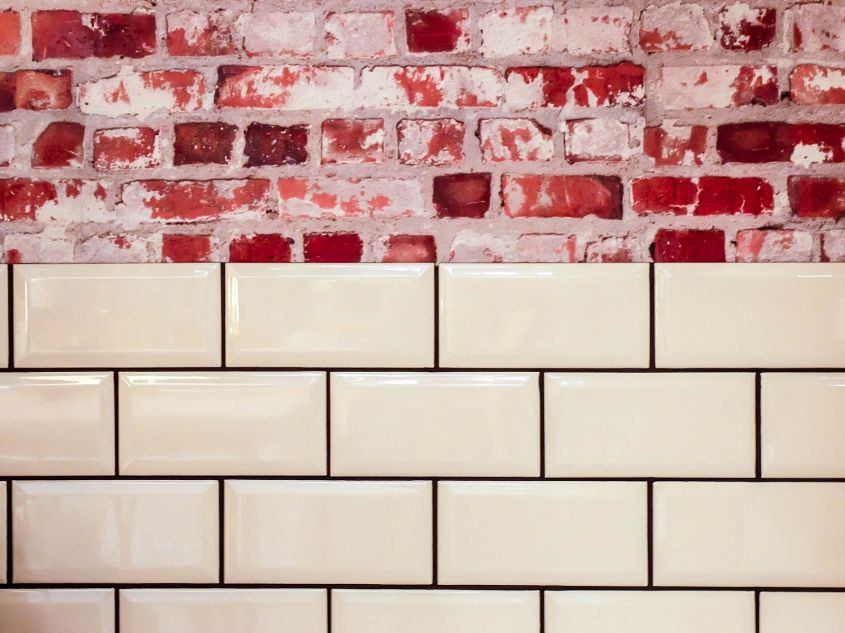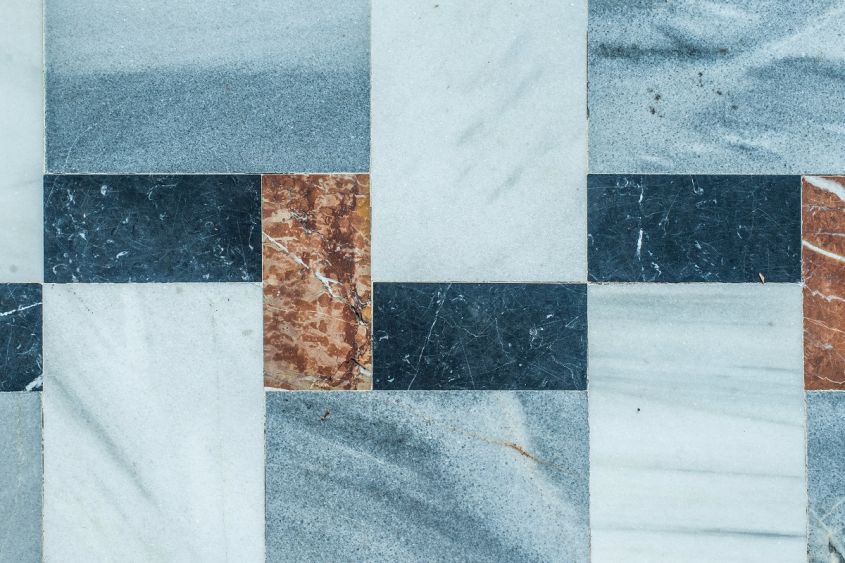Thanks to technological and style evolution, today tiles are an excellent solution for all rooms in the house, especially bathroom and kitchen. Thanks to a variety of designs, sizes and materials, a variety of options are available that make it easier to make rooms as personal as possible.
But so much choice, paradoxically, can create doubts and confusion. Let’s see together then the four golden rules to choose the perfect tile.
The format
There are small (20 x 20 cm or 30 x 30 cm) and large (60 x 60 cm / 80 x 80 cm / 120 x 60 cm), square or rectangular, in some cases even octagonal to alternate with small and square, up to get to the mosaic tiles. There size choice of the tiles is dictated by size of the space but also the style we want to give.
In a minimalist environment, the bigger they are, the less leaks and details will be present, rendering the floor of very homogeneous. For the same reason, they are also suitable for rooms that need to be “enlarged”: the uniform floor will make the space optically larger. Even the mosaic it can be an interesting option, especially in small bathrooms, unlike medium-small square tiles, which by creating more detail could close the environment, especially if it is fancy. However, these have the advantage of making the space more intimate and welcoming.
As regards the walls, it is always better to opt for large rectangular tiles that give more light and space. For a vintage style, okay with the small ones, always rectangular, but shiny and in pastel colors.
 Photo Pexels | Iva Muškić
Photo Pexels | Iva Muškić
Color
When it comes to tiles it is always best to opt for colors not particularly bright or decisive. This is because given the greater difficulty in removal and installation, it is better to opt for solutions that will have one long duration and that those who frequent that environment will not “get bored”.
The choice is as always influenced by taste and space, but also byatmosphere that we want to recreate. If for example we want to make a very intimate environment, we will direct ourselves towards dark and intense colors that envelop those in the room, while if we need to enlarge it, the light color is always the best solution, even pastel.
If, on the other hand, we love to play with colors and periodically change the style of the bathroom, for example, i neutral colors they are right for us because they match the whole color range more or less bright.
Bright colors and patterns they give both a more lively atmosphere, perfect for example for the kitchen, but at the same time they mask any stains or marks.
When you want alternate patterns with monochrome tiles you have to make sure of the yield inside the space: the risk of giving a claustrophobic effect is just around the corner.
Yes to the mix of formats
If you want to create dynamism, choose tiles of different formats and sizes can be fun, but you have to pay close attention to the colors. It doesn’t take much and the two different designs will conflict: always make sure that everything is fluid and above all coherent. For example, if we choose stone tiles, make sure that the same texture characterizes all the materials.
It can also be exploited obvious contrasts for colors and shapes, but they don’t have to sacrifice elegance and brightness
 Photo Pexels | Victor Zissou
Photo Pexels | Victor Zissou
Leaks also play an important role
In the geometric whole, the gap between the tiles plays a predominant role, because it separates or unites the pattern or color of the tile. we must first evaluate what type of effect we are looking for: the almost total absence of detachment between the tiles creates a continuity which, as we have already said before, is excellent for small spaces to enlarge them, especially if the same material is used for several adjacent rooms. If, on the other hand, we want an atmosphere that is in a certain sense more rustic and homely, the clear white joints will be perfect.
Thanks to technological and style evolution, today tiles are an excellent solution for all rooms in the house, especially bathroom and kitchen. Thanks to a variety of designs, sizes and materials, a variety of options are available that make it easier to make rooms as personal as possible.
But so much choice, paradoxically, can create doubts and confusion. Let’s see together then the four golden rules to choose the perfect tile.
The format
There are small (20 x 20 cm or 30 x 30 cm) and large (60 x 60 cm / 80 x 80 cm / 120 x 60 cm), square or rectangular, in some cases even octagonal to alternate with small and square, up to get to the mosaic tiles. There size choice of the tiles is dictated by size of the space but also the style we want to give.
In a minimalist environment, the bigger they are, the less leaks and details will be present, rendering the floor of very homogeneous. For the same reason, they are also suitable for rooms that need to be “enlarged”: the uniform floor will make the space optically larger. Even the mosaic it can be an interesting option, especially in small bathrooms, unlike medium-small square tiles, which by creating more detail could close the environment, especially if it is fancy. However, these have the advantage of making the space more intimate and welcoming.
As regards the walls, it is always better to opt for large rectangular tiles that give more light and space. For a vintage style, okay with the small ones, always rectangular, but shiny and in pastel colors.
 Photo Pexels | Iva Muškić
Photo Pexels | Iva Muškić
Color
When it comes to tiles it is always best to opt for colors not particularly bright or decisive. This is because given the greater difficulty in removal and installation, it is better to opt for solutions that will have one long duration and that those who frequent that environment will not “get bored”.
The choice is as always influenced by taste and space, but also byatmosphere that we want to recreate. If for example we want to make a very intimate environment, we will direct ourselves towards dark and intense colors that envelop those in the room, while if we need to enlarge it, the light color is always the best solution, even pastel.
If, on the other hand, we love to play with colors and periodically change the style of the bathroom, for example, i neutral colors they are right for us because they match the whole color range more or less bright.
Bright colors and patterns they give both a more lively atmosphere, perfect for example for the kitchen, but at the same time they mask any stains or marks.
When you want alternate patterns with monochrome tiles you have to make sure of the yield inside the space: the risk of giving a claustrophobic effect is just around the corner.
Yes to the mix of formats
If you want to create dynamism, choose tiles of different formats and sizes can be fun, but you have to pay close attention to the colors. It doesn’t take much and the two different designs will conflict: always make sure that everything is fluid and above all coherent. For example, if we choose stone tiles, make sure that the same texture characterizes all the materials.
It can also be exploited obvious contrasts for colors and shapes, but they don’t have to sacrifice elegance and brightness
 Photo Pexels | Victor Zissou
Photo Pexels | Victor Zissou
Leaks also play an important role
In the geometric whole, the gap between the tiles plays a predominant role, because it separates or unites the pattern or color of the tile. we must first evaluate what type of effect we are looking for: the almost total absence of detachment between the tiles creates a continuity which, as we have already said before, is excellent for small spaces to enlarge them, especially if the same material is used for several adjacent rooms. If, on the other hand, we want an atmosphere that is in a certain sense more rustic and homely, the clear white joints will be perfect.


